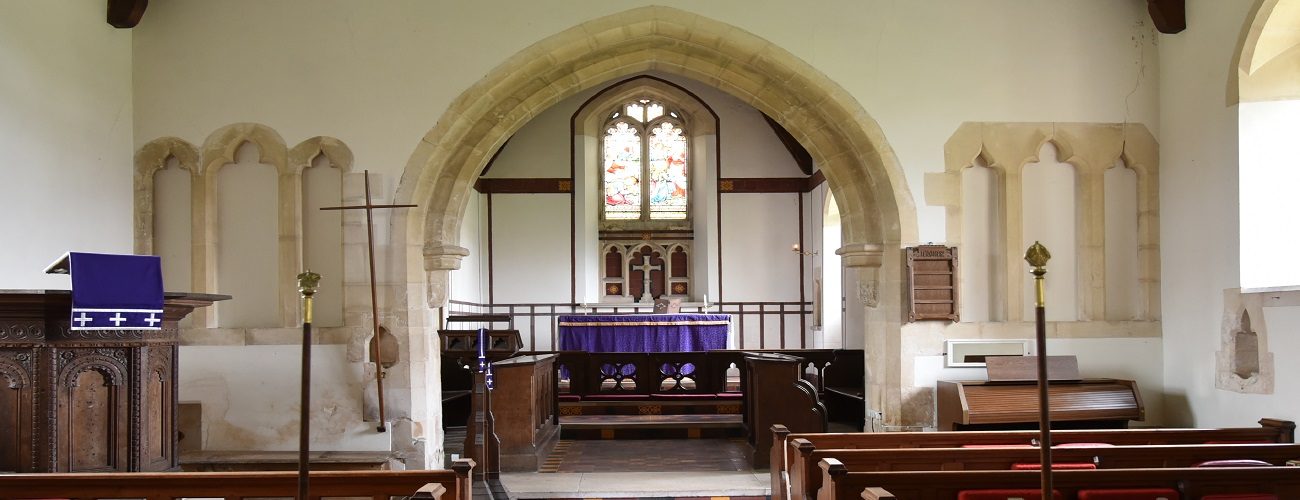
Welcome to St Mary Magdalane
Winterbourne Monkton
This church is set back from the main A4361 down a quiet country lane on the edge of the small village. It is well used for village events such as gardening club and the occasional parish meeting.
Come and see our remarkable pair of tree trunks holding up our ancient wooden bell tower.
Who's Who
Ms Penny Gold
CHurchwarden
01672 539158
Mrs Jenny Scott
Secretary
01672 539104
Regular Services
Regular services take place each month at St Mary Magdalane.
The details for these can be found by searching for ‘St Mary Magdalane’ on our calendar.
History
The roots of St Mary Magdalene church go back to 928 AD, when Glastonbury Abbey owned an estate here. Monks from Glastonbury settled at Winterbourne, and built a small chapel, or church, though possibly in a different location.
The church we see today dates to 1133. The abbot of Cirencester controlled Winterbourne until 1361, but at the Dissolution of the Monasteries it passed into crown hands.
The first 12th century church was simply the current chancel, with a separate detached bell tower. In the 14th century the tower and chancel were linked by a nave, creating the current layout. What makes St Mary Magdalene so unusual is that the bell tower was supported, not with cut timbers, but by four tree trunks. Two of these trunks are still visible at the west end of the nave.
The Norman Font
The earliest feature at Winterbourne is the font, carved in the 12th century with scallop designs and traditional Norman zigzags. Bits of medieval paint can still be seen on the font.
The earliest part of the building are the south porch, north doorway, and a part of the doorway, all of which date to the 13th century. The chancel arch is 13th century, as is a small lancet window in the chancel. There are fragments of 13th century glass in some of the single lancet windows. On either side of the chancel arch is a 13th century piscina.
The pulpit is 17th century, with some very nicely carved panels. The communion table dates to 1678 and there are several 17th century pews as well. Just outside the east end of the church is a tombstone to Rev John Brinsden (1719), which is made from a Sarsen stone brought from the nearby prehistoric barrow of Millbarrow. Set into the exterior of the south well is a vent which allows you to see a carved stone beam, thought to be either late Saxon or early Norman.
Pilgrims
Although the church inhabiting the site during the period of major pilgrimage during the 10th-15th centuries was demolished and replaced by the current church, there is still enough visual architectural evidence to suggest that St Mary Magdalene’s was used by pilgrims as a ‘Slipper Shrine’ – travellers took their shoes at this point for the last barefoot mile to Avebury.
The hospitality offered by the monks to travellers would have attracted the more wealthy/ merchant classes, who would have paid their way, bringing in much needed revenue to a small monastic settlement . It is not likely that people would have slept overnight in this church however.
One of the most significant findings is shown pictorially below in the form of an incised Celtic cross dating from Anglo Saxon times of considerable size and importance relating to the monastic community. It was incorporated into the walls of the rebuilt church.
Local Organisations
Berwick Bassett elects a joint parish council with the adjacent parish of Winterbourne Monkton. It is in the area of Wiltshire Council unitary authority, which is responsible for all significant local government functions.
All meetings are open to members of the public to find out the dates and to find out about what the council does, please visit our website.
